The Cartwrights
By Oswald Barron
THE history of the Cartwrights cannot be taken back to the days of the pointed shoe. Square toes and the Tudors were reigning when we hear first of a Hugh Cartwright who, by his wife Maude Coo, was father of some three or four sons, two of whom at least prospered in the world. William the heir was of Malbeck and Norwell in Nottinghamshire, and as neither his marriage nor his activity was noteworthy, some inheritance must have come to him from his father. Rowland Cartwright, a younger son, is hailed as the founder of the Cheshire Cartwrights, from whom come the Cartwrights of Aynho, opulent squires and great parliament men with manors in Northamptonshire and Oxfordshire; but this descent is wrongly stated, and it seems probable that careless pedigree-makers have tagged the first known ancestor of the Aynho line to the nearest unappropriated cadet of a county family with a genealogy in the heralds' books.
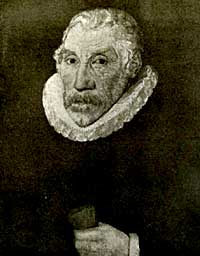
Hugh Cartwright of Malling. 1592.
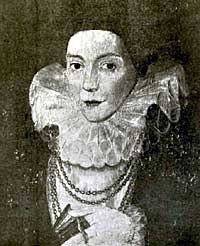
The wife of Hugh Cartwright of Malling. 1593.
Of the sons of this Hugh Cartwright, one Edmund Cartwright, wrought best for the family and its advancement. His wife Agnes is claimed as a daughter of Thomas Cranmer, the squire of Aslacton, whose son Thomas rose to be Lord Archbishop of Canterbury. She is not named in her father's will, but the near kinship of Edmund Cartwright to the Cranmers is made apparent in many ways. When the Archbishop had leases from the Crown of certain manors in Kent, West and East Malling, Ewell and Parrock, and the site of Malling nunnery, Edmund Cartwright had these long and rich leases from his patron. In Nottinghamshire Edmund bought Ossington, which was to be the chief seat of his branch, a manor near Newark, which had been late of the lands of Newark Priory. With his hands thus full of church lands the squire of Ossington should have earned the church's curse for himself and his line, but the ill-gotten Ossington lands were long handed down by prosperous descendants. He died in the first year of Queen Mary, before my lord archbishop came to the fire and faggot. His son and heir, Hugh Cartwright of Malling, married a daughter of Sir John Newton, a lady whose hand he might have demanded with less than the traditional diffidence of the suitor, for she is said to have left no less than sixteen sisters in her father's house. He lived in his Malling home, and when the Kentish rebels, under Sir Harry Isley and the two Knevetts, were marching to join Wyatt at Rochester, Hugh Cartwright was one of those from Mailing who met them in Wrotham and routed them in the little Kentish battle of Blackesol field.
His nephew, William Cartwright, followed Hugh of Malling as his heir. This William, who died in 1602, as appears by his tomb at Ossington, married Grace Dabridgecourt, a descendant of the knightly house of Aubricicourt, or Dabridgecourt, the Hainaulters whose ancestor Nicholas received Queen Isabel of England and her son Edward when they fled from Paris in 1326. Young Edward the king remembered the kindness to the prince, and the Dabridgecourts prospered under him. The stall plate of Sir Sanchet Dabridgecourt, a founder of the Order of the Garter, still remains in St. George's Chapel, enamelled in its colours. Sir John, another Dabridgecourt came to be honoured in the same order, and Froissart has much to tell of the deeds of Sir Eustace Dabridgecourt, who was struck to the ground at Poitiers, and taken by five German men-at-arms to be tied ignominiously to a cart until his own men rescued and remounted him. From this house descended a family of midland gentry, and Grace, the wife of William Cartwright, was daughter of Thomas Dabridgecourt, of Longdon Hall in Warwickshire. The shields of husband and wife may be seen painted on the doors of the curious chest of drawers still in the possession of their descendant, Mr. George Cartwright.
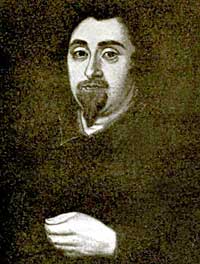
Sir Hugh Cartwright the Cavalier. D. 1668.
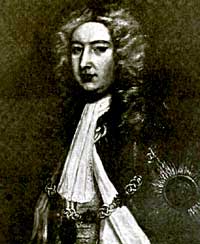
John Brownlow, Viscount Tyrconnel, D. 1754. Husband of Elizabeth Cartwright.
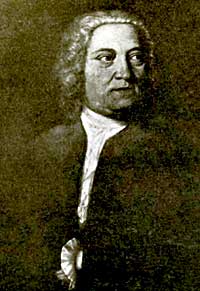
William Cartwright of Marnham. D. 1748.
These Cartwrights of Ossington threw themselves in the civil war and spent themselves for the king. Ossington Hall went to ruin in these troubles, and William Cartwright of Ossington, the head of the branch, was amongst those who must needs compound for their estates with the committee of the parliament in 1646. He is described as of Ossington in Nottinghamshire, and of Stoke Lacy and Mintridge in Herefordshire, and pleaded that he had been in arms in 1643, but not afterwards. In that year also came Sir Hugh Cartwright of Southwell, and Hugh his son, to compound. These two cadets of the house had been at the taking of Newark. Before Pontefract fell, Sir Hugh and his son were excepted as dangerous malignants from the mercy offered the garrison, and Sir Hugh's life was saved by his suffering himself to be bricked up by his friends in a hiding hole with a month's meat and drink. John Cartwright of Wheatley, who was probably a younger brother of William, was another compounder, confessing 'delinquency in arms.' He made his peace, taking the Covenant and the Negative Oath in this same year. Another kinsman, Lieutenant-Colonel George Cartwright, who had a pass to go beyond sea in 1645, may have been the Colonel Cartwright of whose ill-treatment Mrs. Lucy Hutchinson makes her complaint.
Side by side with the Ossington branch the elder line of Cartwright survived, descendants of William, the eldest son of the founder of the house. That the two branches held together is shown by more than one marriage of kinsfolk. William Cartwright of Norwell married a daughter of Reynold Peckham of Wrotham, by a daughter of the first Ossington Cartwright, and his grandson, another William, who built a new house of brick and stone at Normanton, married his cousin Christian, daughter of Sir Hugh Cartwright the cavalier. This William is said to have been himself a cavalier in arms, but he begot a son, again a William, who left the Stuart cause and served as a captain in Ireland in the regiment which the Earl of Kingston led for King William of Orange. He died in this campaign, not by the sword, but by small-pox, and was buried at Belfast. John Evelyn, in his diary, names him as a Nottinghamshire man, who persuaded the council of state to send a letter of amnesty to the New England colonists, who were even then in a 'peevish and touchy humour.' His son's marriage with Rebecca, daughter and heir of Edmund Nicholson, squire of Marnham, made Marnham the chief seat of his family. Elizabeth, youngest daughter of William and Rebecca, married Sir John Brownlow, K.B., Viscount Tyrconnel. William Cartwright of Marnham, high sheriff of Nottinghamshire in 1742, brought both lines of the family together by marrying his distant cousin, Anne Cartwright, daughter and heir of George Cartwright of Ossington.
The marriage of cousins is held to beget weaklings, but the children of these cousins defied the rule by growing up as a nest of celebrities. It is not demanded of a squire's son and heir that he should be famous, and William the son and heir is only a name in the pedigree, with more than a suspicion of extravagance and loose living clinging about his memory. Charles Cartwright, the youngest of the five sons, entered the navy, and with a lieutenant's command took a West African Dutch fort. But he left the navy too soon to take part in the great sea epic of his later days, and died at home with nothing more than lieutenant for his tombstone.
